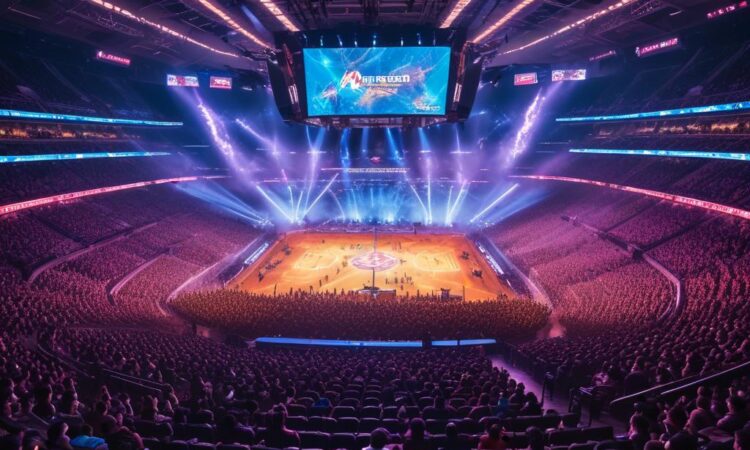The Evolution of Esports Broadcasting: Examining the Advancements in Esports Broadcasting Technology
The world of esports has witnessed a meteoric rise in popularity over the past decade, transforming from a niche phenomenon into a global entertainment powerhouse. This explosive growth has been paralleled by a remarkable evolution in esports broadcasting technology, pushing the boundaries of viewer engagement and immersion. From the early days of rudimentary livestreams to the sophisticated, multi-platform broadcasts we see today, the journey of esports broadcasting has been one of relentless innovation.
From Basic Livestreams to Immersive Experiences
In the nascent days of esports, broadcasting was primarily limited to basic livestreams, often with minimal production value. Viewers were content with a single camera feed, basic commentary, and limited information about the game itself. However, as esports matured, so too did the demand for more engaging and immersive viewing experiences. This led to the adoption of cutting-edge technology, transforming esports broadcasts into visually stunning and data-driven spectacles.
The Rise of Multi-Camera Production
One of the earliest advancements in esports broadcasting was the introduction of multi-camera production. This allowed for more dynamic and engaging visuals, capturing the action from multiple angles and perspectives. The use of slow-motion replays, highlight reels, and camera cuts added a layer of excitement and depth to the broadcasts, giving viewers a more comprehensive understanding of the game.
The Integration of Virtual and Augmented Reality
In recent years, virtual reality (VR) and augmented reality (AR) have emerged as game-changers in esports broadcasting. VR technology allows viewers to experience the game from the perspective of a player, providing an unprecedented level of immersion. AR, on the other hand, overlays virtual elements onto real-world footage, adding contextual information and enhancing the viewer’s understanding of the game’s dynamics.
VR and AR technologies have opened up a world of possibilities for esports broadcasts. Imagine being able to watch a Dota 2 match from the perspective of a hero, or having real-time statistics overlaid onto the screen as you watch a League of Legends battle. These advancements are blurring the lines between spectator and participant, creating a truly interactive and engaging viewing experience.
The Power of Data Visualization
Data visualization has become an integral part of modern esports broadcasting. By leveraging the vast amount of data generated during a game, broadcasters can provide viewers with insights that enhance their understanding of the competition. Graphs, charts, and heatmaps are used to illustrate player performance, team strategies, and the overall flow of the game.
Data visualization not only provides viewers with valuable information but also adds a new layer of excitement and engagement. Seeing a player’s KDA (Kills, Deaths, Assists) displayed in real time creates a sense of urgency and competition, while heatmaps showing the movement of players across the map provide strategic context and insight.
Interactive Viewing Experiences
Esports broadcasters are increasingly focusing on creating interactive viewing experiences that engage viewers beyond simply watching the game. Platforms like Twitch and YouTube have introduced features like chat rooms, emotes, and interactive polls, allowing viewers to connect with each other and the broadcasters in real-time.
Some esports tournaments have even incorporated interactive elements into their broadcasts. Viewers can participate in polls to predict the outcome of a match, vote for their favorite player, or even influence the game’s outcome through real-time voting. This level of interactivity creates a sense of community and ownership among viewers, making them feel like they are an integral part of the esports experience.
The Future of Esports Broadcasting
The evolution of esports broadcasting shows no signs of slowing down. As technology continues to advance, we can expect even more immersive and engaging experiences. Here are some of the trends that are likely to shape the future of esports broadcasting:
The Rise of Personalized Viewing Experiences
Personalization is a growing trend in the entertainment industry, and esports broadcasting is no exception. Viewers are increasingly demanding tailored experiences that cater to their individual preferences. Broadcasters are responding by offering customizable viewing options, such as the ability to choose different camera angles, commentary tracks, and language settings.
The Integration of AI and Machine Learning
Artificial intelligence (AI) and machine learning (ML) are revolutionizing various industries, and esports broadcasting is no exception. AI can be used to analyze game data in real-time, provide personalized insights to viewers, and even automate certain aspects of the broadcast. ML can help improve the accuracy of predictions, identify emerging trends, and enhance the overall viewing experience.
The Metaverse and Immersive Broadcast Environments
The metaverse is emerging as a new frontier for entertainment, and esports broadcasting is poised to embrace this paradigm shift. Imagine watching a live esports event in a virtual arena, interacting with other viewers, and even competing in virtual tournaments. The metaverse holds the potential to transform esports broadcasting into a fully immersive and interactive experience.
Conclusion
The evolution of esports broadcasting has been a testament to the power of innovation and technology. From basic livestreams to immersive, data-driven spectacles, the journey has been one of relentless advancement. As technology continues to evolve, we can expect even more exciting developments that will push the boundaries of viewer engagement and redefine the way we experience esports.

